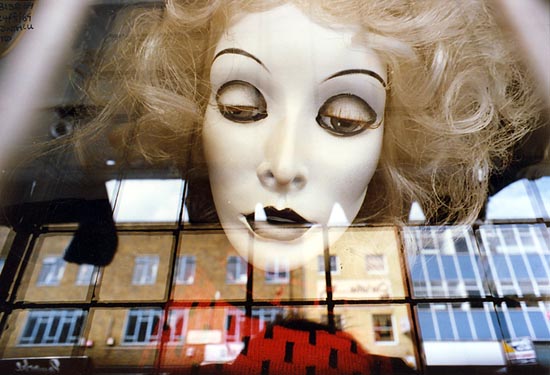
For some years in the 1980s and 1990s I worked on a project for which the great majority of images were taken through windows. Some of those images eventually made their way into an ‘artist’s book’ that I produced one year during during the Christmas break around 20 years ago, under the title Café Ideal, Cool Blondes, and Paradise.
At the time I was working with colour negative film and having these trade processed with 6×4″ prints of every exposure, or occasionally when I was feeling rich, 7½x5″ (later I processed my own C41 and only contact printed films.) And these postcard-sized images were pasted onto sheets of 12×8¼ cotton rag with a ¾ folded at the gutter end to paste to the previous sheet, eventually with a little sewing and thick cardboard covers made into a 64 page hardback volume with a short text and 54 images. It still sits on my shelf.
I showed the work to a couple of publishers, both of whom expressed some interest, but eventually decided not to publish it, or at least not unless I could come up with at least half the cost either from my own resources or from a grant, and I lost interest. A few years later, in 2000, I put a very slightly different version of the work on the web, where it can still be seen: Café Ideal, Cool Blondes, and Paradise.
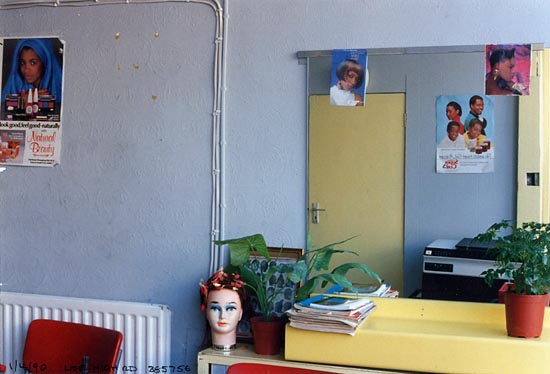
Almost all the images were taken with a 35mm shift lens on an Olympus OM4 body, with a few using a 28mm; possibly some of the earlier work on the project was made with an OM2.
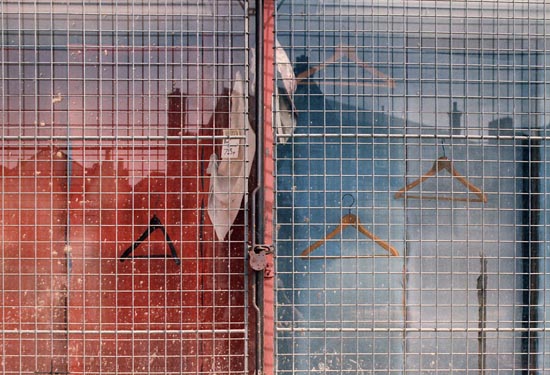
Of course some of the images I made depend for their success on the reflections, but there were many where the reflections made images impossible, or detracted from those I did make.
During the project I learnt quite a lot about reflections, starting with the fact that the polarising filter I always carried and which every magazine article and technical tome told you was essential seldom actually did what you wanted it to.
For many of the pictures I was able to work close to the window glass, and used a collapsible rubber lens hood costing a couple of quid (now from £1.12 post free on Ebay) pressed on to the glass surface to eliminate all reflections. Also essential was a cloth to clean the outside of the window through which to photograph.
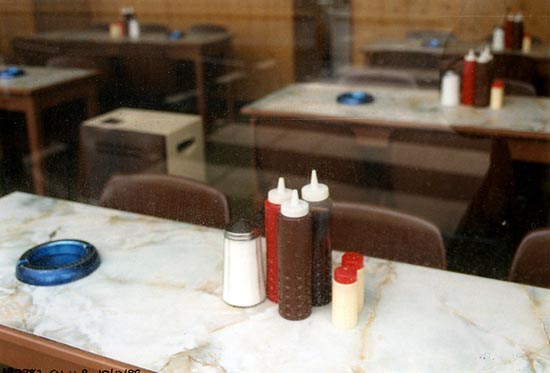
Sometimes, the dust on a window – often on the inside where I couldn’t reach it – added to the image, as in this image of tables inside a café, taken a short distance from the glass with the lens well stopped down. I’m not sure now whether the scratch was on the glass or a later addition to the negative!
What led me to think again about these pictures was a post by Michael Zhang on PetaPixel, about research at MIT into the removal of reflections from images taken through glass. When working through glass, reflections normally are a double image, with a reflection from both the front and back surfaces of the glass, and by searching for parts of the image that are seen double the software is able to distinguish the reflections from the rest, and can then reduce or eliminate them. Perhaps before long we will see a ‘reflections’ filter in Photoshop.
Zhang also points out that there are products that are more elaborate (and more versatile, not to mention rather more expensive) than my cheap rubber lenshood for allowing you to work through glass – such as the Lenskirt. The price of around $50 puts me off, and it’s also considerably larger, though it will work with almost any lens. The days of lens systems like the Zuiko, where almost every lens I used had a 49mm or 52mm filter thread are unfortunately gone.
One of the other problems I faced was that window glass is often rather coloured, and although filtration when printing with colour neg might deal with this, when using a wide angle, rays from the edges of the subject travel obliquely through the glass with a longer path, sometimes leading to a noticeable colour shift. It’s a problem that would be much easier to solve working with digital images than in the darkroom, where I sometimes resorted to dodging and burning with different filtration. I worked on scans of some of the images and wrote about it in a post here in 2008, Cafe Ideal, Cool Blondes and Paradise revisited.
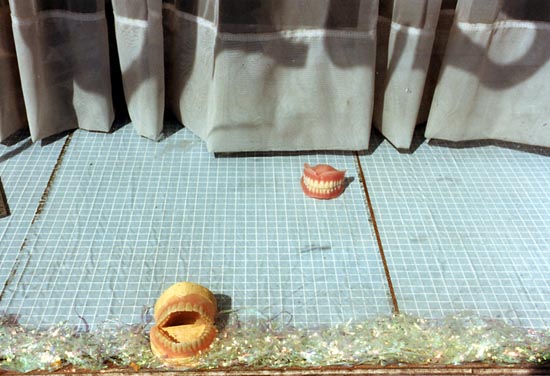
I hope to publish a revised version of Café Ideal, Cool Blondes, and Paradise at a future date, in a new edit with some extra images and a few replacements. But finding the images and scanning the negatives will be a long job. Along the bottom edge of some of the prints in the book and on the web are details of the date and location where the images were taken, which makes finding things easier, but over the years many of the negatives that I printed from have been filed out of the date sequence I nominally used.
______________________________________________________
My London Diary : Buildings of London : River Lea/Lee Valley : London’s Industrial Heritage
All photographs on this and my other sites, unless otherwise stated, are taken by and copyright of Peter Marshall, and are available for reproduction or can be bought as prints.
To order prints or reproduce images
________________________________________________________